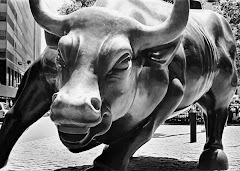Firstly, an index is a basket of stocks that is use to represent broad market performance. These selected stocks are known as index component stocks. These stocks bear certain characteristics such that collectively, they can be used to measure the broad market or certain industry’s stock market performance (and sentiments).
Uses Of Indexes
1) Benchmarks portfolio performance. When you invest through a fund manager, i.e. buying a unit trust, how do you know or gauge the performance of your fund (or the fund manager)? Well, you measure it against certain related index. Therefore, if your fund manager can’t even match the index stocks, let alone talking about beating the index which is your expectation, then you might as well buy those index stocks rather than paying the fund manager.
2) Constructing index fund/portfolio. There are fund houses that introduce Index Fund to the market. This simply means that the fund manager will buy the index stock of a specific financial market and will hold on to it. This type fund is a passive fund as the fund managers do not need to manage or trade it actively. In fact, trading decision can be made through some computer model and little human decision is needed. The operation cost of an index fund is low compared to the usual actively managed funds. Comparatively, an index fund will charge a much lower commission. An Exchange-Traded Fund is also an index fund only that it is listed and traded actively by the investors. For more information on the ETF listed on the SGX, please click on the above link. The ETFs that are currently (Oct 2007) available on the SGX are:
Equities:
· CIMB FTSE ASEAN40 ETF
· iShares MSCI India ETF
· Lyxor ETF China Enterprise (HSCEI)
· Lyxor ETF Hong Kong (HSI)
· Lyxor ETF MSCI AC Asia-Pacific Ex Japan
· Lyxor ETF Japan (Topix)
· Lyxor ETF MSCI Korea
· Lyxor ETF MSCI Taiwan
· streetTRACKS® Straits Times Index Fund
· U.S. Cross-Listed ETFs (JV ETFs)
Fixed Income:
· ABF Singapore Bond Index Fund
Commodities / Precious Metals:
· Lyxor ETF Commodities CRB
· streetTRACKS® Gold Shares
3) Technical analysis. Obviously, speculators/punters/technical
 analysts uses index to predict stock movement. In this case, an index is simply a reflection of human beings’ current behaviour (i.e. stock market sentiments) and these analysts hope that through identifying certain pattern (that repeated over and over again), they could make profitable investment decisions that are usually short-termed. It is really about predicting investors’ behaviour. Or alternatively, if a person can read everyone’s mind, then technical analysis on indexes will not be needed.
analysts uses index to predict stock movement. In this case, an index is simply a reflection of human beings’ current behaviour (i.e. stock market sentiments) and these analysts hope that through identifying certain pattern (that repeated over and over again), they could make profitable investment decisions that are usually short-termed. It is really about predicting investors’ behaviour. Or alternatively, if a person can read everyone’s mind, then technical analysis on indexes will not be needed.4) Academic purpose – calculation of beta and portfolio theory studies.
Index Computation
1) Price-weighted index. In a price-weighted index such as the Dow Jones Industrial Average and the NYSE ARCA Tech 100 Index, the index is derived by summing up all the prices of the component stocks and divide by the number of component stocks. However, this divisor had to be adjusted over time to prevent jumps in the index when there is a change in the companies stocks and when there is a stock splits. A price-weighted index has the property that when a component stock splits, the split stock has a reduced impact on the average, and all the other stocks have a slightly increased impact. In a price-weighted index, proportional movements of high-priced component stocks have a much greater impact than movements of lower-priced stocks regardless of the size of the company.
2) Value-weighted (or capitalisation-weighted) index. In a price-weighted index, the size of the firm has no impact on the index. A market-value weighted or capitalization-weighted index such as the Hang Seng Index and Straits Times Index factors in the size of the company. The size of a company is measure by its market capitalisation (no. of shares issued x current share price). Thus, a relatively small shift in the price of a large company will heavily influence the value of the index.
Dow Jones Industrial Average
Charles Dow, one of the founders of Dow Jones & Co., created the famous Dow Jones Averages in the late 19th century. On 16 Feb 1885, he published a daily average of 12 stocks (10 railroads and 2 industrials) that represented active and highly capitalized stocks. Four years later, Dow published a daily average based on 20 stocks-- 18 railroads and 2 industrials. On 26 May 1896, the Dow Jones Industrial Average (DJIA) was created from the following stocks:
· American Cotton Oil
· American Sugar
· American Tobacco
· Chicago Gas
· Distilling & Cattle Feeding
· General Electric
· Laclede Gas
· National Lead
· North American
· Tennessee Coal & Iron
· U.S. Leather
· U.S. Rubber
Today, only GE survived through the centuries and retained its membership in the DJIA. Now, the DJIA 30 component stocks are:
· 3M (NYSE: MMM)
· Alcoa (NYSE: AA)
· Altria Group (NYSE: MO)
· American Express (NYSE: AXP)
· American International Group (NYSE: AIG)
· AT&T (NYSE: T)
· Boeing (NYSE: BA)
· Caterpillar (NYSE: CAT)
· Citigroup (NYSE: C)
· Coca-Cola (NYSE: KO)
· DuPont (NYSE: DD)
· ExxonMobil (NYSE: XOM)
· General Electric (NYSE: GE)
· General Motors (NYSE: GM)
· Hewlett-Packard (NYSE: HPQ)
· Home Depot (NYSE: HD)
· Honeywell (NYSE: HON)
· Intel (NASDAQ: INTC)
· IBM (NYSE: IBM)
· Johnson & Johnson (NYSE: JNJ)
· JPMorgan Chase (NYSE: JPM)
· McDonald's (NYSE: MCD)
· Merck (NYSE: MRK)
· Microsoft (NASDAQ: MSFT)
· Pfizer (NYSE: PFE)
· Procter & Gamble (NYSE: PG)
· United Technologies Corporation (NYSE: UTX)
· Verizon Communications (NYSE: VZ)
· Wal-Mart (NYSE: WMT)
· Walt Disney (NYSE: DIS)
.gif) Analysis of the Dow trend since 1885 shows an annual compounding gain of 1.85%, excluding inflation. The Dow Jones Industrial Average, like most other popular averages, does not include dividends, so the change in the index greatly understates the total return on Dow stocks. I do mean greatly-- as with about 4.6% annual dividends reinvested since 1896, the Dow would be somewhere around 700,000 today!
Analysis of the Dow trend since 1885 shows an annual compounding gain of 1.85%, excluding inflation. The Dow Jones Industrial Average, like most other popular averages, does not include dividends, so the change in the index greatly understates the total return on Dow stocks. I do mean greatly-- as with about 4.6% annual dividends reinvested since 1896, the Dow would be somewhere around 700,000 today!
To be continue......
.JPG)



